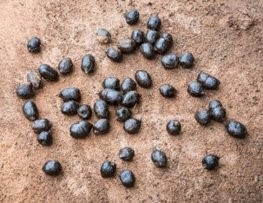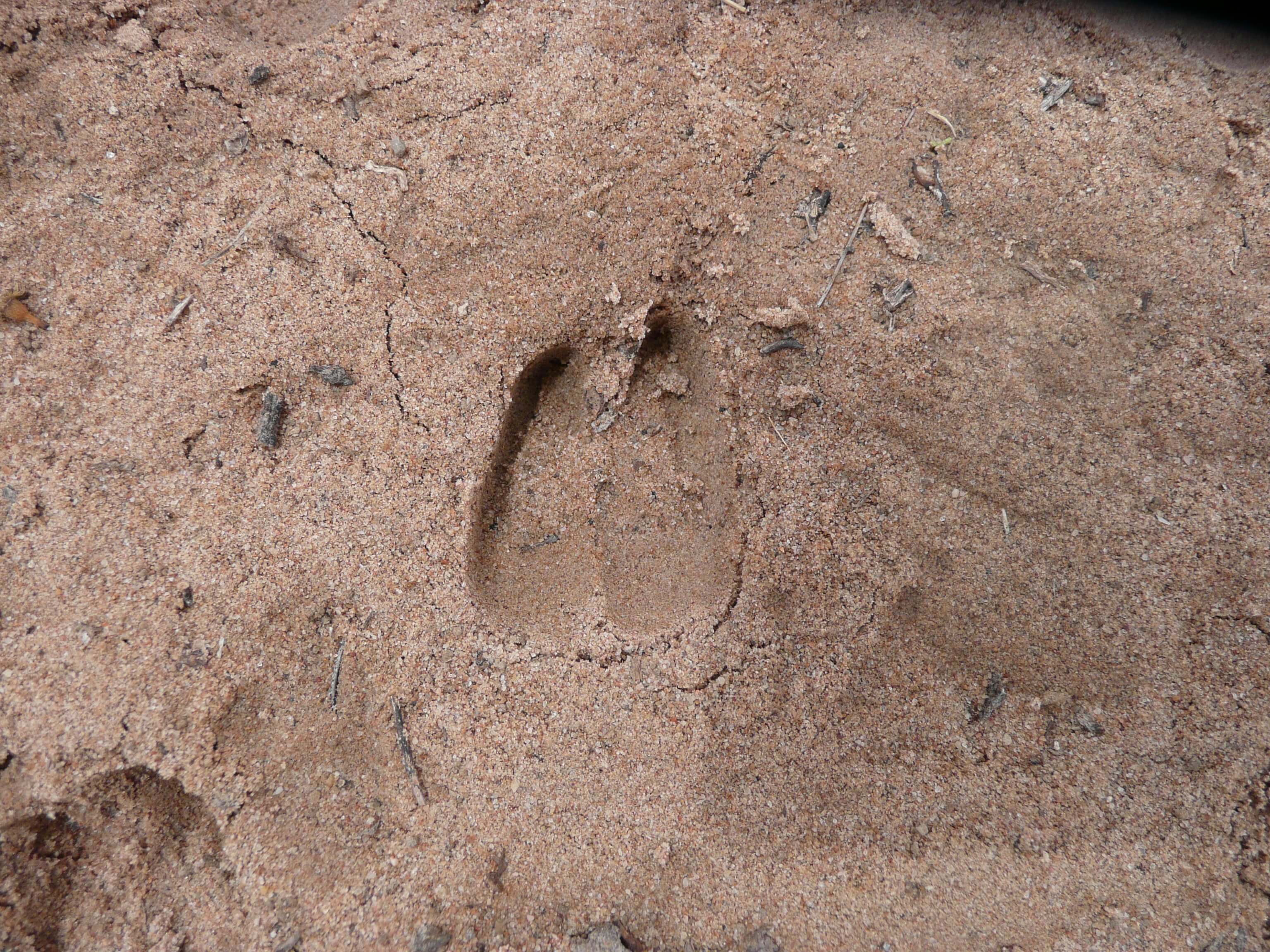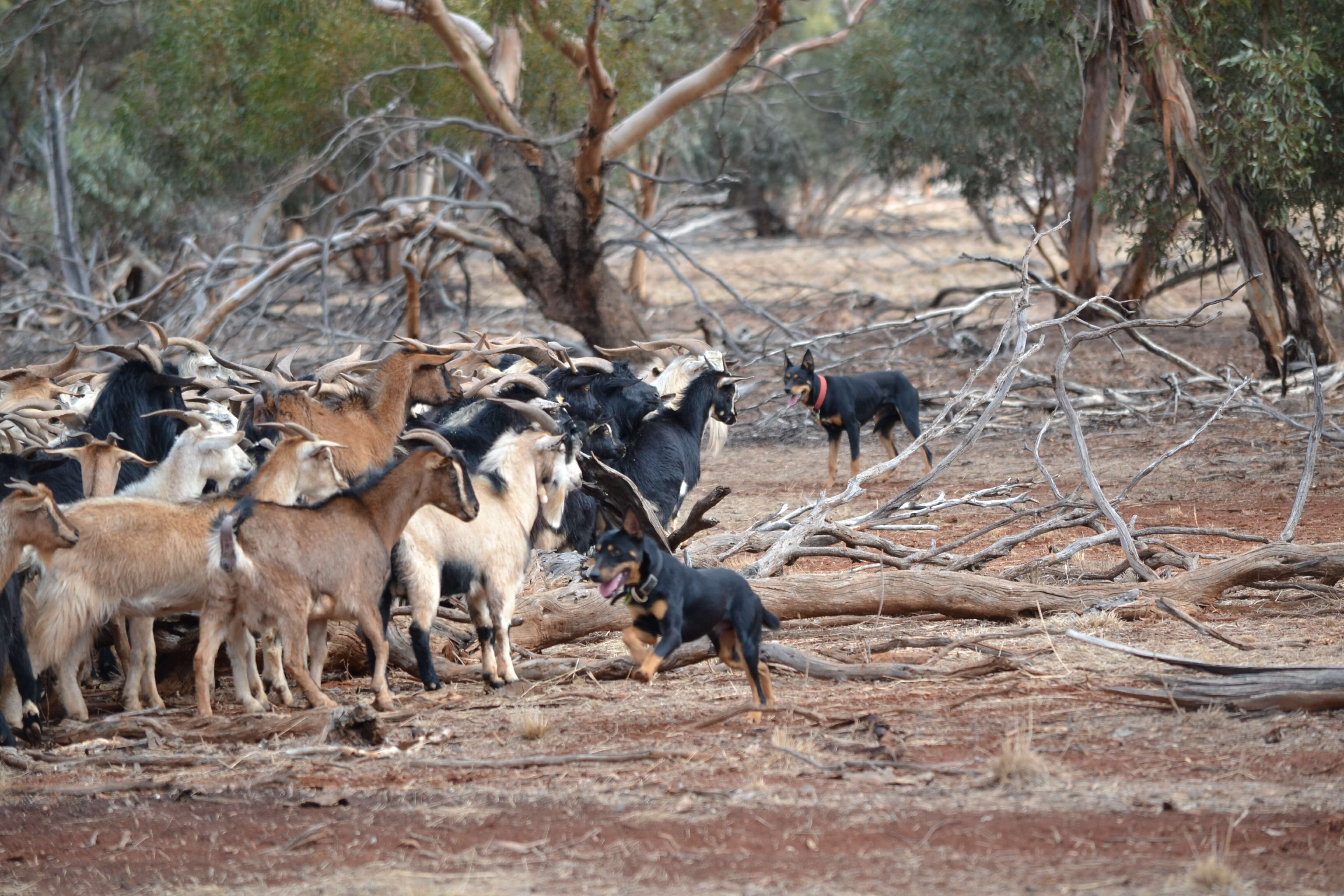Integrated feral goat control
Introduction
 In Victoria, feral or wild populations of goats (Capra hircus) are declared as established pest animals under the Catchment and Land Protection Act 1994 (CALP Act).
In Victoria, feral or wild populations of goats (Capra hircus) are declared as established pest animals under the Catchment and Land Protection Act 1994 (CALP Act).
Under the CALP Act, all landowners have a responsibility to prevent the spread of and, as far as possible, eradicate established pest animals on their land.
Feral goats cause considerable environmental damage by competing with native wildlife and livestock for resources, damaging habitat by overgrazing, and selectively grazing more palatable species often leading to erosion and weed invasion.
Feral goats also impact agriculture by grazing pastures and crops, competing with livestock and damaging infrastructure.
Additionally, feral goats pose a biosecurity risk, acting as potential vectors for many livestock diseases such as foot and mouth disease.
Feral goat biology and behaviour
Before designing a feral goat control program, it is important to understand feral goat behaviour and ecology. The following should be considered:
- Feral goats are browsers that eat a range of vegetable material.
- Feral goats are highly intelligent and capable of adapting their behaviour to live in a wide range of habitats.
- Feral goats may change location and behaviour according to seasonal conditions and prolonged disturbance.
- Feral goats require a reliable and adequate supply of water, food and shelter.
- Breeding can occur throughout the year in good conditions.
- Feral goats can travel long distances to find food or water or to escape hunting pressure.
See goat (feral or wild) for more information about their characteristics and behaviour.
Managing feral goats on your property
Points to remember:
- Effective feral goat control requires and integrated approach using a combination of control options (not just one).
- It is also important to work with your neighbours, rather than individual properties.
- Control feral goats before they cause damage.
- Ensure your feral goat control program doesn't affect native wildlife.
- If you are planning to use traps to control feral goats – the trap specifications, trap checking times, provision of food, water and shade, and humane destruction of trapped feral goats must be carried out in accordance with the requirements of the Prevention of Cruelty to Animals Act 1986 (POCTA) and associated regulations. Trapping has several animal welfare implications and anyone considering trapping should read Humane Vertebrate Pest Control.
- If you are planning to use dogs for feral goat control, be mindful that there are specific requirements for the use of dogs for hunting. Under Section 28 of the Domestic Animals Act 1994, a person must not set or urge a dog to attack, bite, rush at or chase any animal except when hunting in accordance with the Prevention of Cruelty to Animals Act 1986 (POCTA).
Planning your program
Good planning is essential for maximising the effectiveness of your feral goat control program and minimising the impacts on other animals. Consider goat density, distribution and the habitat as this will determine what control actions are most appropriate.
Work together
Best results are achieved when neighbours work together to control feral goats across the landscape, rather than just on individual properties. Talk to your neighbours and local Landcare group to work out a plan for coordinated action.
Conduct monitoring
Identify and map feral goat feeding and shelter areas on your property. Feral goats are often found around:
- rocky outcrops
- steep slopes
- thick vegetation
- gullies
- ravines.
They also frequent waterholes for drinking in hot/dry climates and are often active during the day. At night, feral goats will rest in high or difficult-to-access areas.
Assess feral goat activity on your property by measuring tracks and scats, using motion sensor cameras and/or by undertaking counts particularly at water points in dry areas. Aerial surveys can also be used in some broad-scale infestations. It is also important to identify and map areas where non-target animals' species may be at risk.
 Establishing a benchmark of feral goat numbers and damage before undertaking feral goat control will help gauge the effectiveness of your control program later.
Establishing a benchmark of feral goat numbers and damage before undertaking feral goat control will help gauge the effectiveness of your control program later.
Use the information you have gained from monitoring to:
- target your control effort
- monitor the progress and success of your control program
- adapt and improve your program
- minimise risk to non-target species.
It is important to continue to monitor feral goat numbers/damage after your program has finished, so you can treat any re-infestations.
Aim to be feral goat free
Create a detailed feral goat management plan that has a specific aim and time-bound objectives to ensure the best outcomes. Eradication may not be possible in all areas, so ongoing monitoring and management is often required.
Use the right tools
Effective feral goat management requires an integrated approach using all control tools that suit your property. Every feral goat should be exposed to as many different control tools as possible, to ensure those missed with one are accounted for with another.
Timing
You must consider seasonal movements of feral goats when developing your feral goat management plan, as their home ranges can vary considerably depending on resource availability. In drier times, feral goats often congregate around water sources, making mustering, trapping or shooting easier to coordinate.
Evaluate your success
Conduct another round of monitoring after your control program, using the same methods that you used before to measure program success.
Consider:
- Are feral goats still present?
- Are you still experiencing damage caused by feral goats?
- Is the impact of feral goats above/below acceptable thresholds?
- What is working well?
- What could be improved?
- Do you need to change your plan?
- Have you managed all the risks?
Follow up
When you start to see signs of feral goat activity again, implement control actions immediately.
Remember, feral goat control is time-consuming and there is no quick-fix solution.
Management techniques
An integrated management approach requires the use of several management techniques. Some effective techniques for managing feral goats are listed below.
 Exclusion fencing
Exclusion fencing
Exclusion fencing involves constructing a barrier around feral goat sensitive areas on your property.
Exclusion fencing is a non-lethal way of protecting high-value areas from feral goats. However, it is expensive and often not practical at a large scale. Fences must be strong and high enough to exclude feral goats that are excellent climbers and jumpers.
Unfortunately, very few fences will provide complete, and ongoing protection from feral goats. Fences need to be regularly checked and maintained so they can be fixed as soon as breakthrough occurs, otherwise the fence becomes ineffective.
It is best to have fences erected by experienced or professional fencers.
Shooting
While shooting provides the most target-specific and humane form of feral goat control, it rarely provides population-level control when undertaken on its own. Due to the high reproductive capacity of feral goats, their populations can quickly recover to original densities only a few years following most shooting campaigns.
However, where small, isolated populations of feral goats occur, coordinated ground shooting may be useful.
Aerial shooting of feral goats from a helicopter is also popular for managing feral goats, as it is suitable for covering large inaccessible areas. It is also highly target-specific and cost effective in areas where goats can be seen from the air and when it is carried out by appropriately trained and skilled operators.
Aerial shooting is not cost-effective when feral goat numbers are low due to the difficulty in finding widely distributed animals. Its effectiveness is also reduced in habitats with closed tree canopies.
The use of firearms to control feral goats must conform to relevant firearm legislation and be integrated with other control methods.
 Mustering
Mustering
Mustering feral goats with dogs, motorbikes, helicopters or traps around waterholes is popular for managing feral goats because mustered feral goats are often sold to recoup lost production costs. In isolation, mustering will not provide long-term feral goat control, as populations will quickly recover.
The value of feral goats sold from muster is generally less than the lost production resulting from a feral goat infestation, and managing feral goats as a resource has little impact on their damage.
Trapping
Trapping is an effective method for managing feral goats in hot/dry climates as their numbers are often concentrated around permanent water. Trapped feral goats may then be transported for sale or humanely destroyed on site.
 Feral goat traps are designed to allow feral goats to enter but prevent them from leaving.
Feral goat traps are designed to allow feral goats to enter but prevent them from leaving.
While there are a range of different trap designs available, traps generally consist of a high sturdy fence around permanent water with are series of one-way entrances, ramps or both.
The climbing and jumping ability of feral goats is exploited by the ramp entrance as it allows goats climb or jump into the trap to access water. Trapping requires considerable time and cost for construction and ongoing maintenance of traps.
Trapping has several animal welfare implications. Anyone considering trapping should read Humane Vertebrate Pest Control.
Biological control
A range of naturally occurring parasites and diseases may provide a small level of feral goat population control in Australia, although they do not provide any significant benefit. New biological control agents are unlikely to be released for the control of feral goats as they would also impact the domestic goat industry.
Other management techniques
Feral goats rely on stock watering points in drier parts of Australia. Restricting feral goats access to water (when water is not required by stock) can be an effective way to control feral goat populations as part of an integrated management approach.
Image credits
Figure 1 courtesy of Neil Schultz.
Figures 3, 4 and 5 courtesy of Jason Wishart.